What Hi-Fi? Verdict
It’s affordable and good-looking, but The One doesn’t hit Philips’ usual standards with either its picture or sound quality
Pros
- +
Ambilight is pretty and immersive
- +
Affordable for a 65-inch TV
- +
Comprehensive HDR support
Cons
- -
Compressed looking colours
- -
Fragile audio
- -
Pictures look excessively dark
Why you can trust What Hi-Fi?
Philips has enjoyed great success in recent years with its ‘The One’ TVs: models picked out to represent what the brand considers to be the most all-round attractive combination of price, features and performance in its latest TV range.
This year the honour of being The One goes to the PUS8807, and it’s easy to understand why. It's got Philips’ Ambilight technology. It's got Philips’ impressive P5 picture processing engine. Its build quality is impressive. It's got an Android smart TV system. It supports 4K gaming at 120Hz, as well as VRR and ALLM switching. Yet the 65-inch version we’re looking at here costs just £899.
Price
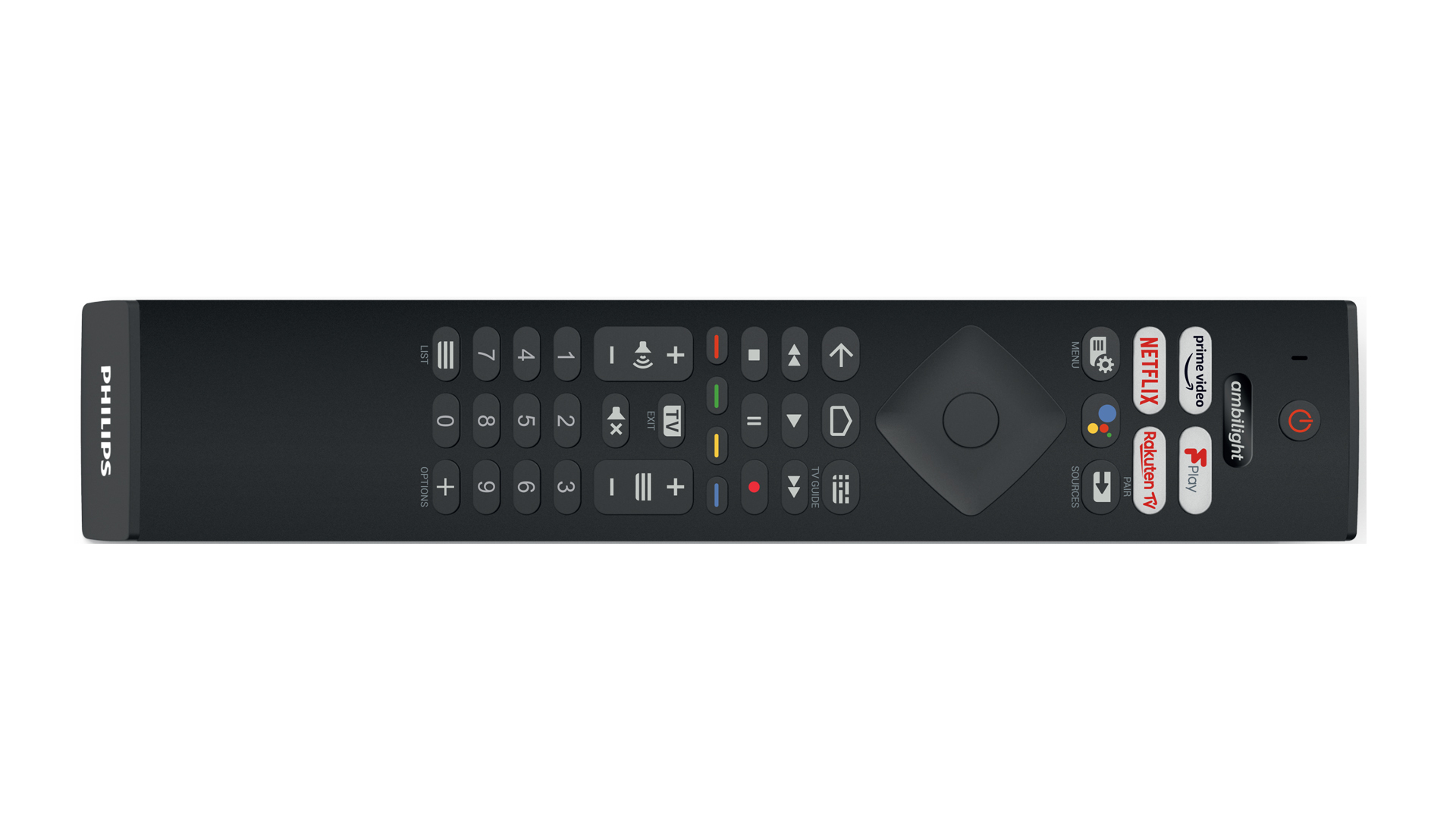
The 65PUS8807’s £899 price in the UK is very approachable for a decently feature-rich 65-inch LCD TV. We can’t include US and Australian prices, though, for the simple reason that it’s not available in either of these territories.
There are also 55-, 75-, and even 86-inch PUS8807 models, which cost £749, £1299 and £2599 respectively – prices that ensure that the whole range is competitive at every screen size it targets. Hence its unique The One branding within Philips’ 2022 range.
Design
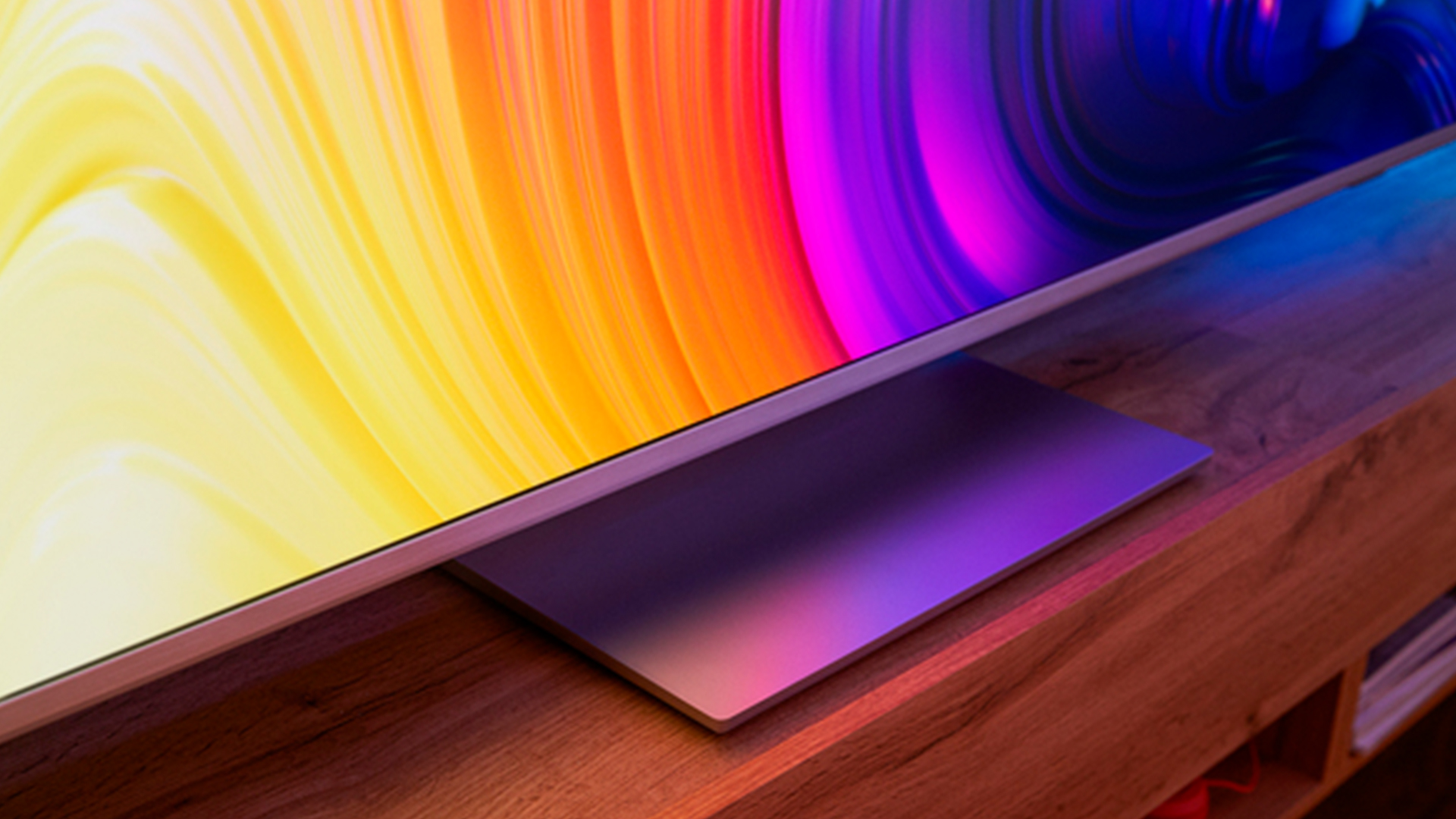
The Philips 65PUS8807 is a sharp looker for such an affordable set. Its crisp silvery bodywork looks and feels more premium than the more obviously plasticky finishes of most similarly priced rivals, and the way the TV rests on a centrally mounted, heavy-duty stand means you don’t need a particularly wide bit of furniture to place it on.
What most propels the 65PUS8807 into the limelight, though, is Ambilight. This finds LED lights arranged along the rear of its top, left and right edges casting out pools of light from around the TV that can be set to either a single colour (for ambience), or to track the colour content of the pictures you’re watching. If you choose the latter option, the accuracy and positioning of Ambilight’s colours really is pretty uncanny, extending the viewing experience beyond the screen for extra immersion.
Personally, we prefer Ambilight set to a relatively mild brightness level and a relatively relaxed ‘response time’ (the speed at which it reacts to changes in onscreen content). If you really want to turn your living room into Times Square, though, rest assured that Ambilight makes that possible, too.
Ambilight also forms part of a new design feature called Aurora. This plays your choice of a wide variety of free videos and animations on screen in a low-power mode so that you don’t have to put up with a gaping black rectangle in your room when you’re not watching the TV in earnest.
Features
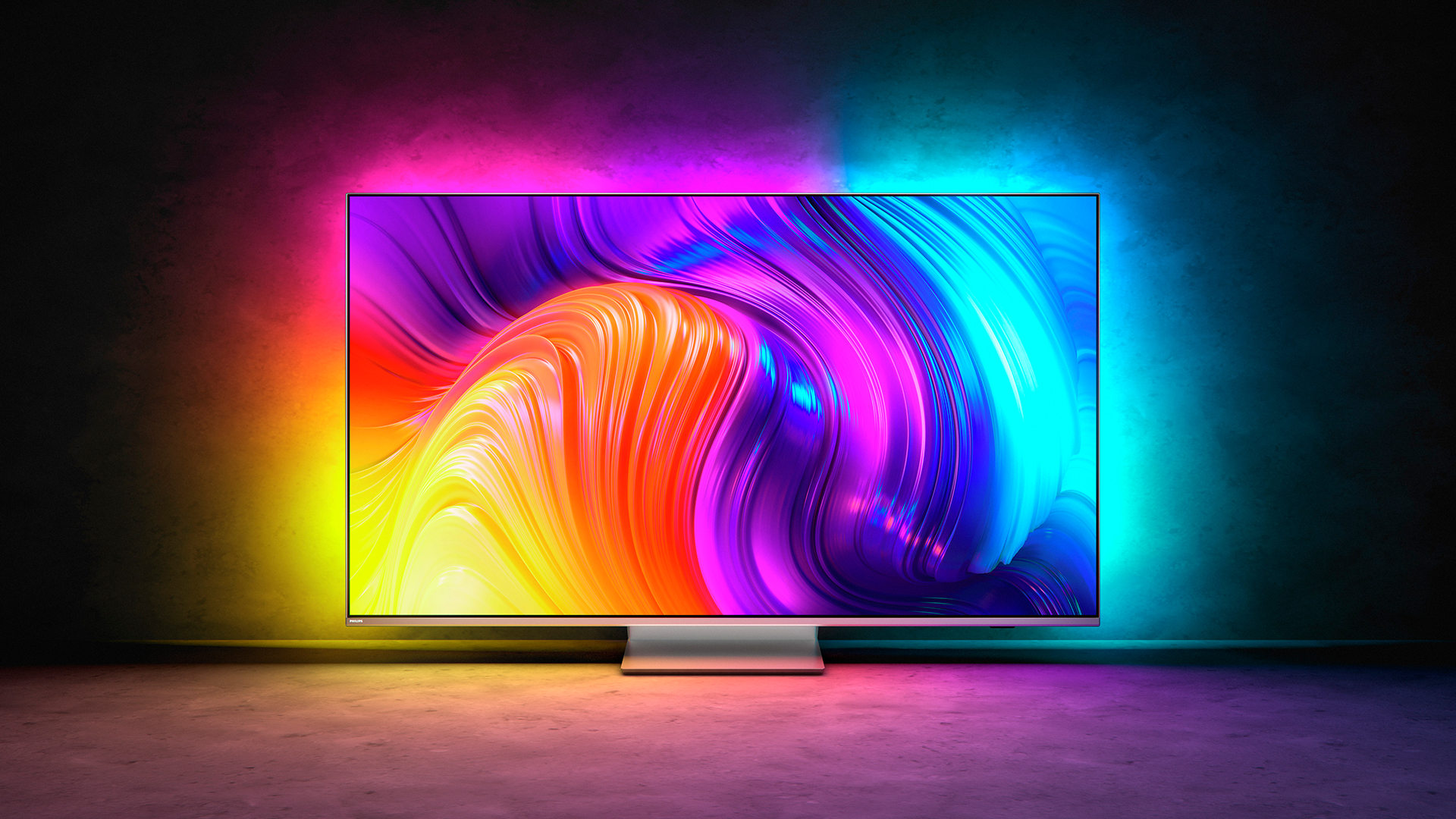
The Philips 65PUS8807 is built around a VA type of panel, and illuminated by a direct LED system (where the lights are positioned behind the screen rather than around its edges). There’s no local dimming, but for its money the VA/direct LED combination represents a promising start.
Note, though, that the 55-inch and 75-inch PUS8807s use IPS panels. Such panels usually deliver slightly better viewing angles but significantly worse contrast, so this review of the 65PUS8807 shouldn’t be taken as representative of how those other two screen sizes will perform.
The 65PUS8807’s connections are mostly impressive for its price. In particular, two of its four HDMI ports are capable of handling 4K/120Hz gaming signals, as well as the two other major new gaming features of VRR (including FreeSync Premium) and ALLM switching.
There’s support for Dolby Vision gaming up to 60Hz as well, plus you can optimise your HDR gaming performance via the HGiG system, where set-up screens on your console enable it to determine the best HDR output for the TV, rather than the TV trying to figure it out using its own tone mapping features.
What’s more, provided you use the TV’s Monitor setting you can enjoy 4K/120Hz gaming without the halving of vertical resolution that affects the TV’s other presets.
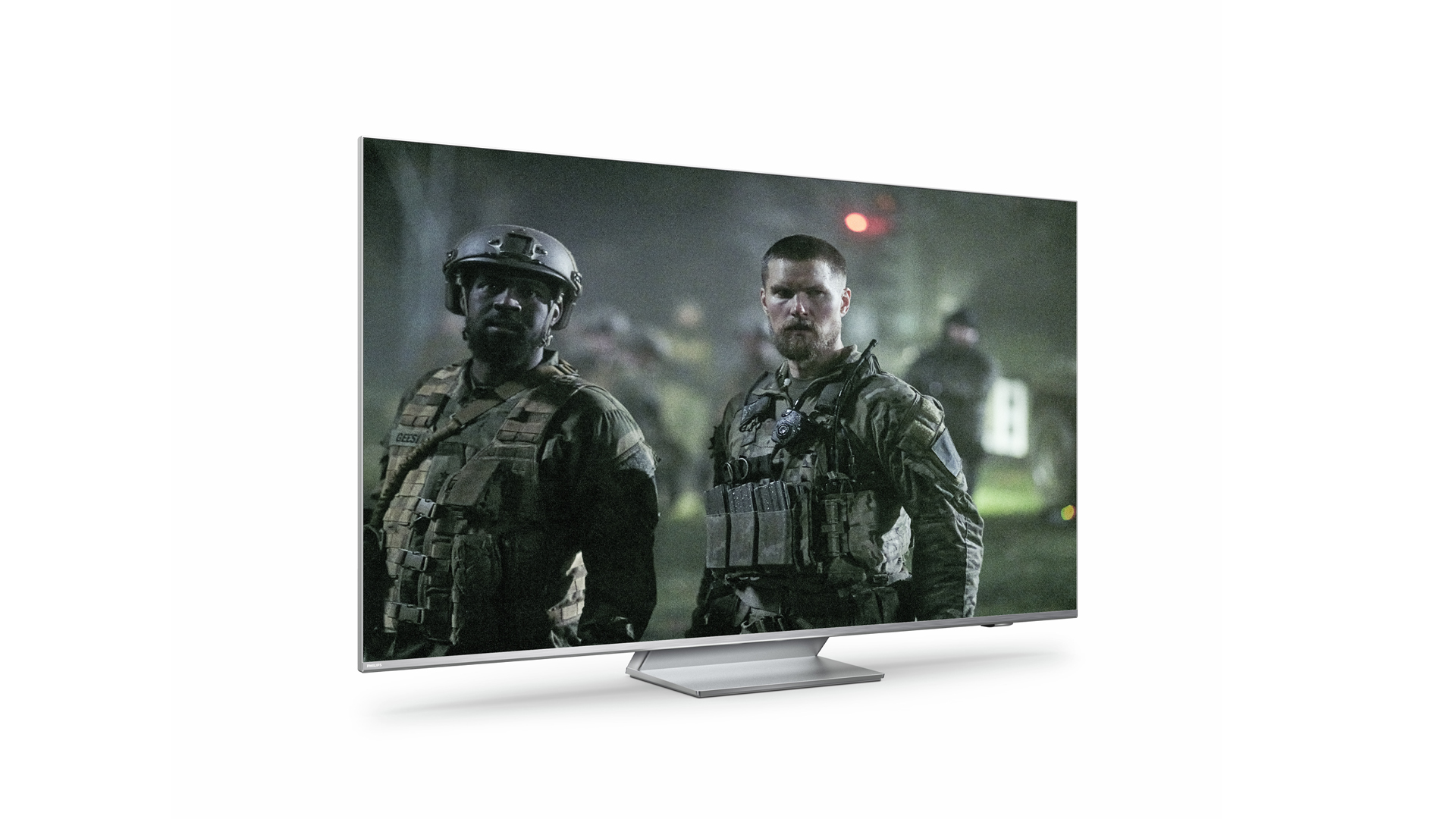
Screen size 65 inches (also available in 55in, 75in and 86in)
Type LCD
Resolution 4K
HDR formats HLG, HDR10, HDR10+, Dolby Vision
Operating system Android TV 11
HDMI inputs x 4
HDMI 2 x 2.1 48Gbps
Gaming features 4K/120, VRR, ALLM, HGiG, Dolby Vision gaming (up to 60Hz)
ARC/eARC eARC
Optical output? Yes
Dimensions (hwd, without stand) 84 x 145 x 8.5cm
Smart features on the 65PUS8807 are provided by version 11 of Android TV, backed up by Freeview Play to bring on board the catch-up apps for the main UK terrestrial broadcasters. Android still isn’t the very best smart TV system; it’s a little dictatorial, doesn’t offer as many customisation options as some rivals, and doesn’t work particularly ergonomically with TVs’ set-up menus. It has improved greatly with recent generations, though, and as usual Philips’ implementation of it is slick and stable.
Another significant string to the 65PUS8807’s bow is its support of all of the main HDR formats: HDR10, HLG, Dolby Vision and HDR10+. Many TVs support two or three of these formats, but it’s still relatively rare to find a brand doing the consumer a favour by tackling all four.
The 65PUS8807’s picture processing is provided by a fifth-generation version of Philips’ P5 engine. Built around the principle that there are five key elements to TV picture quality (contrast, colour, motion, sharpness and source detection) that can each be individually improved by specific processing tweaks applied in an optimal order, it should be said that P5 now exists in a sixth generation form on Philips’ premium TVs for 2022.
We were mostly very impressed by the P5 Gen 5 system on Philips’ 2021 TVs, though, so given how relatively little the 65PUS8807 costs we’re inclined to see its carriage of this older processor as an advantage of Philips being able to trickle down previous flagship processing to cheaper models over time rather than a significant weakness compared with Philips’ 2022 flagships.
Picture
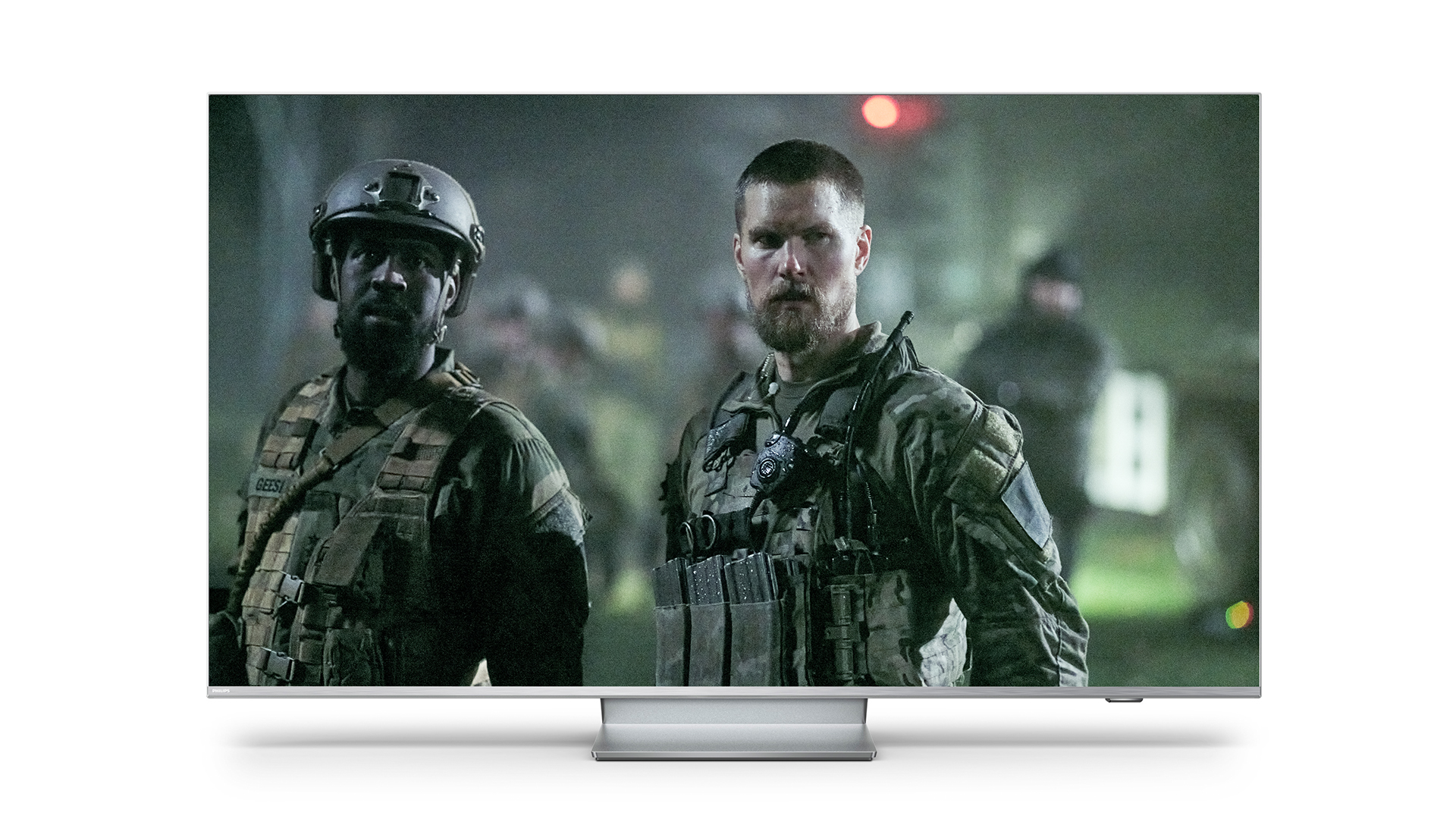
After the consistent excellence of Philips’ OLED TVs we had high hopes for this LCD set too. Especially given that it’s been picked out by Philips as ‘The One’ for 2022. Unfortunately, though, the 65PUS8807’s picture performance is best summed up as a bit weird – and not in a wonderful sort of way.
Using its out of the box picture presets, its pictures are at times among the least natural and most processed-looking images we’ve seen. For starters, black levels look extremely forced. Yes, they do look darker, blacker, and less greyed-over than you might expect at this price point, but the trade-off for this is that really distracting amounts of subtle detailing end up getting crushed out of the picture. This leaves dark areas looking hollow, empty and overpowering. Especially, unexpectedly, if you’re watching a Dolby Vision source.
Even the Dolby Vision Bright preset can’t overcome this issue, while the Dolby Vision Dark mode film fans typically like to use, as it gives the most accurate images, looks so overpoweringly dark on the 65PUS8807 that it can sometimes become hard to make out what’s going on. This is very strange indeed considering that Dolby Vision can normally be expected to help a TV deliver a more controlled and dynamic picture.
The light controls Philips is using to achieve such dark blacks on the 65PUS8807 can also become distractingly obvious at times, thanks to the way the baseline black level depth can shift and jump within a shot or scene as bright objects move in and out of the frame.
The 65PUS8807’s colours are peculiar, too. Shading can look strangely coarse during dark scenes, with obvious striping in areas that should contain fine blends and a rather plasticky, undetailed look to skin tones. There’s noticeably more colour noise in our favourite test movie clips than we’re accustomed to seeing, too, and some tones just look flat-out wrong. The trees outside Georgie’s house at the start of It, for instance, look brown rather than the muted green you should see, and colours generally during this opening sequence tend to look oddly inconsistent.
Some tones, especially greens, can look over the top with the TV’s Natural or Vivid picture presets, yet if you switch to the gentler Movie mode the whole picture looks rather washed out and biased towards yellow. It might have been interesting to see if a Filmmaker Mode preset could have improved things, but no such mode is available on this aggressively priced set.
Thankfully there are options in the 65PUS8807’s sprawling set-up menus that can help a bit. Setting the HDR Premium mode to Medium rather than Low/Off suddenly brings in much more skin tone detail, for instance, while pushing up the Black Level setting to around its 65 mark for Dolby Vision and around its 58 mark with HDR10 can start to reintroduce some of the lost shadow detailing and reduce colour coarseness.
These fixes do have negative side effects, such as less inky black levels, the appearance of multiple areas of backlight clouding, and more ‘clipping’ (subtle shading loss) in bright highlights of HDR pictures. But at least these distractions are less debilitating and distracting than the ones associated with the 65PUS8807’s default settings.
There are more positive things to report. The screen gets quite bright for such an affordable 65-inch TV, and bright scenes tend to be much less affected by the sort of colour and lost detail issues associated with dark scenes. The difference in quality between bright and dark footage is one of the starkest we’ve seen, in fact.
The 65PUS8807’s pictures are also extremely sharp and, where not affected by black crush, detailed. This is especially true with native 4K images, but the set upscales HD images quite aggressively too.
Even after they’ve been tweaked to get around the worst issues of the picture presets, though, in truth the 65PUS8807’s pictures never feel natural and balanced enough to class as better than average. Which is definitely not the sort of standard we usually associate with a Philips TV.
Sound
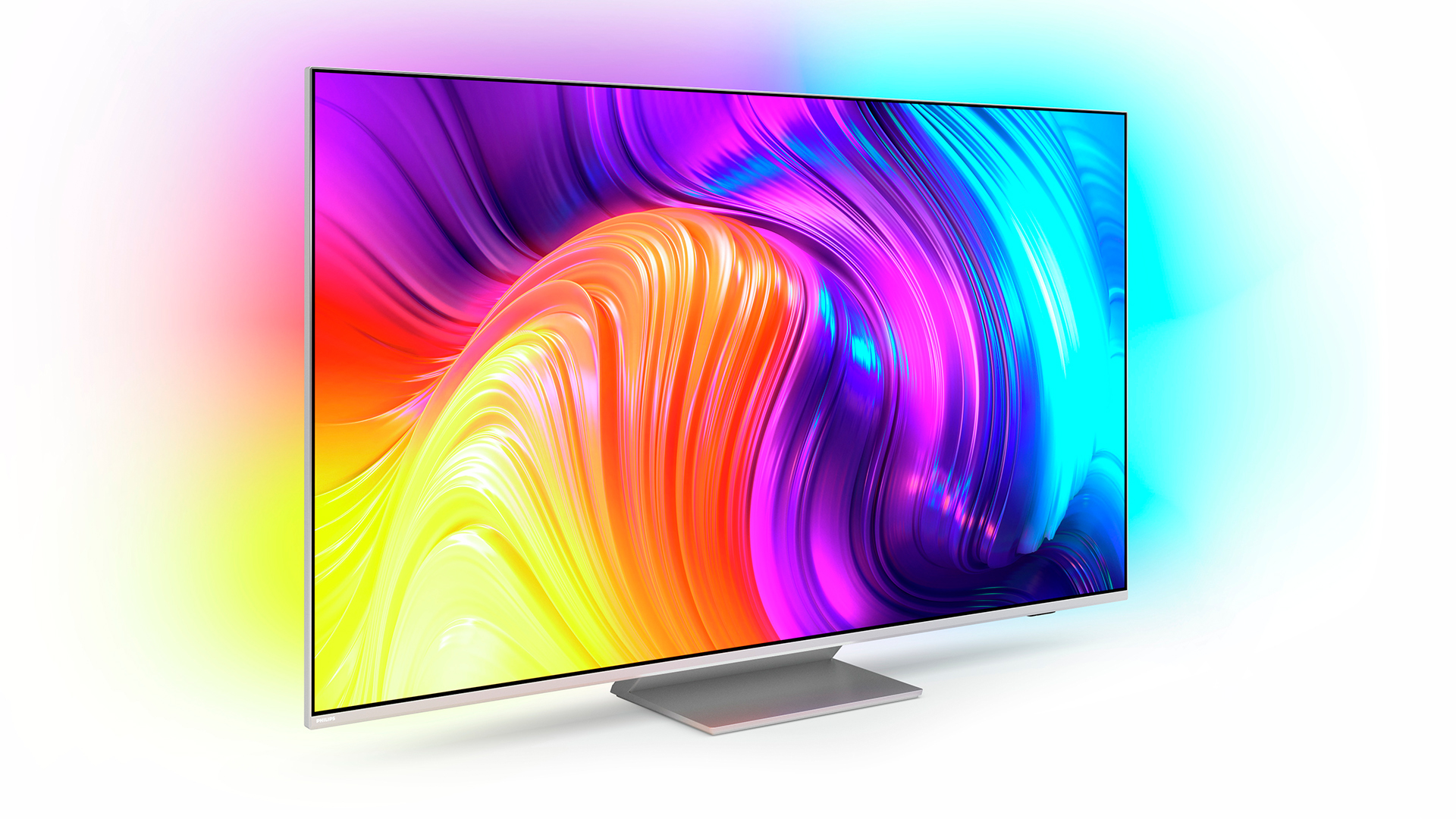
The 65PUS8807 supports Dolby Atmos playback and boasts a 2 x full-range speaker arrangement driven by 10 watts of amplification, bolstered by Dolby Bass enhancement, Room Calibration and DTS Play-Fi wireless speaker network features. Its sound quality, though, falls well short of the heights achieved by Philips’ OLED TVs. Especially those that carry speaker systems developed in conjunction with UK Hi-Fi brand Bowers & Wilkins.
The sound isn’t loud or well projected enough to deliver a really satisfying movie experience, for instance; action movie mixes sound as if they’re struggling to get out. There’s also a slightly low-fidelity and harsh feel to some of the higher sound effects a mix may contain, while heavy bass effects, especially if they’re sustained for more than a second or so, tend to cause the speakers to succumb to some distracting phutting and crackling.
Escalating action scenes tend to level off a bit early rather than continuing to expand all the way up to their crescendos – though at least the 65PUS8807’s sound doesn’t actually fall back when the going gets tough as it does with many TVs.
Also on a more positive note, dialogue is clean and seems to be coming from the actors’ mouths on the screen rather than somewhere below it. And while high-pitched sounds can appear a bit harsh, other effects tend to be presented with good clarity and even a moderate sense of steered Dolby Atmos effect placement. This helps the soundstage typically sound busy and involving, despite its limited scale.
Verdict
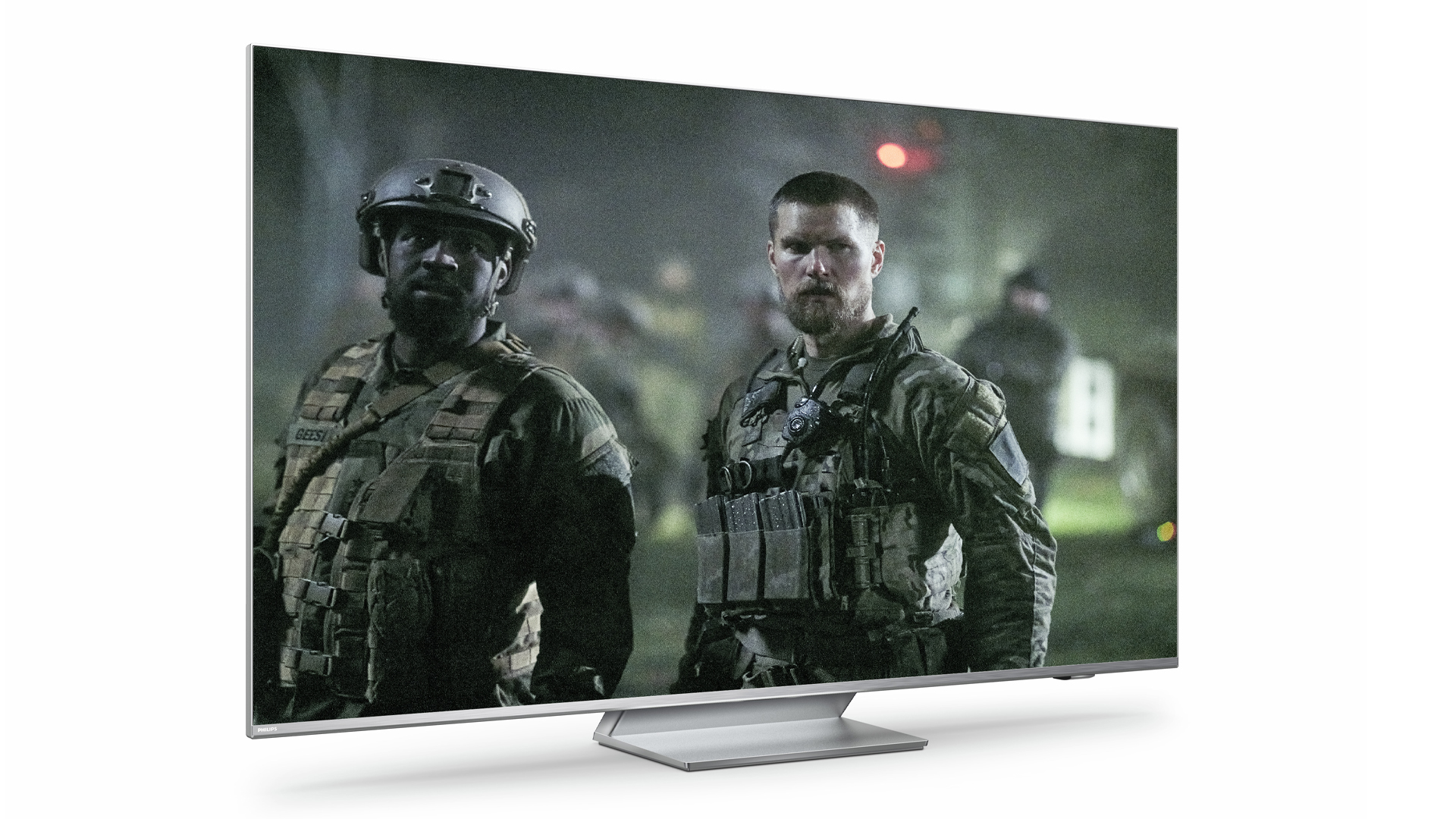
The 65PUS8807 isn’t quite ‘The One’ we’d hoped it would be. Its out of the box pictures look really quite odd, frankly, and while they’re improvable via some of the picture set-up options, they’re never free enough of flaws to hit the sort of standards we usually associate with Philips TVs. Its audio is only fair to middling, too, which again feels a little shy of what we know the brand is capable of.
After a bit of picture tweaking the 65PUS8807 manages to perform well enough to just about be solid enough for its money; it’s hard to imagine any Philips TV failing to be at least that. We’re struggling to agree with Philips, though, that this is really ‘The One’ to recommend from its latest TV range.
SCORES
- Picture 3
- Sound 3
- Features 4
MORE:
Read our review of the Samsung QE55QN90B
Also consider the Sony XR-55A80J
What Hi-Fi?, founded in 1976, is the world's leading independent guide to buying and owning hi-fi and home entertainment products. Our comprehensive tests help you buy the very best for your money, with our advice sections giving you step-by-step information on how to get even more from your music and movies. Everything is tested by our dedicated team of in-house reviewers in our custom-built test rooms in London, Reading and Bath. Our coveted five-star rating and Awards are recognised all over the world as the ultimate seal of approval, so you can buy with absolute confidence.

